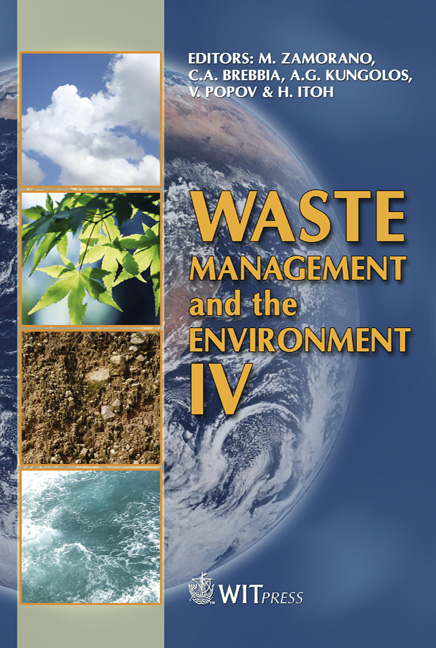Combustion Of Lignocellulosic Materials In An Experimental Fluidized Bed System
Price
Free (open access)
Transaction
Volume
109
Pages
10
Page Range
279 - 288
Published
2008
Size
359 kb
Paper DOI
10.2495/WM080301
Copyright
WIT Press
Author(s)
G. Lopez-Ocaña, R. G. Bautista-Margulis, J. R. Hernandez-Barajas, H. O. Rubio-Arias & R. A. Saucedo-Teran
Abstract
Incineration via fluidized bed combustion is a worldwide technology used for the thermal treatment of solid wastes with various calorific values. The objective of the present investigation was to evaluate the combustion efficiency and gas products from a three-phase combustor in order to thermally treat lignocellulosic materials obtained from urban solid wastes generated in Villahermosa-Tabasco, Mexico. The experiments were carried out in three sections: (EXP-1) the bed temperature (Tb) was varied from 800 to 900°C, having a static bed height (Hs) of 0.15 m; (EXP-2); same Tb range but Hs = 0.20 m; (EXP-3) same Tb range but Hs = 0.25 m. Throughout the experiments, the combustor was operated with an average excess air (XSA) of 168% and a mean bed particle size (Dp) of 0.8 mm. The results revealed that the combustion efficiency varied from 73.6–82.6% for Hs = 0.15 m, 78.4–87.9% for Hs = 0.20 m, and 80.1–90.6% for Hs = 0.25 m. At Tb < 815°C and Hs = 0.15 m, low combustion efficiencies were obtained (73–80%), with relatively high CO emissions (280–310 ppm). At Tb > 850°C and Hs = 0.20–0.25 m, higher combustion efficiencies were attained (82–91%), with maximum emission concentrations of CO (102 ppm), SO2 (13 ppm) and NOx (17 ppm) that never exceeded the maximum permissible levels established in the current Mexican environmental legislation. The prototype probed to be technically and environmentally feasible for the treatment of lignocellulosic materials via fluidized bed combustion. Keywords: combustion, lignocellulosic residues, fluidized bed.
Keywords
combustion, lignocellulosic residues, fluidized bed.





